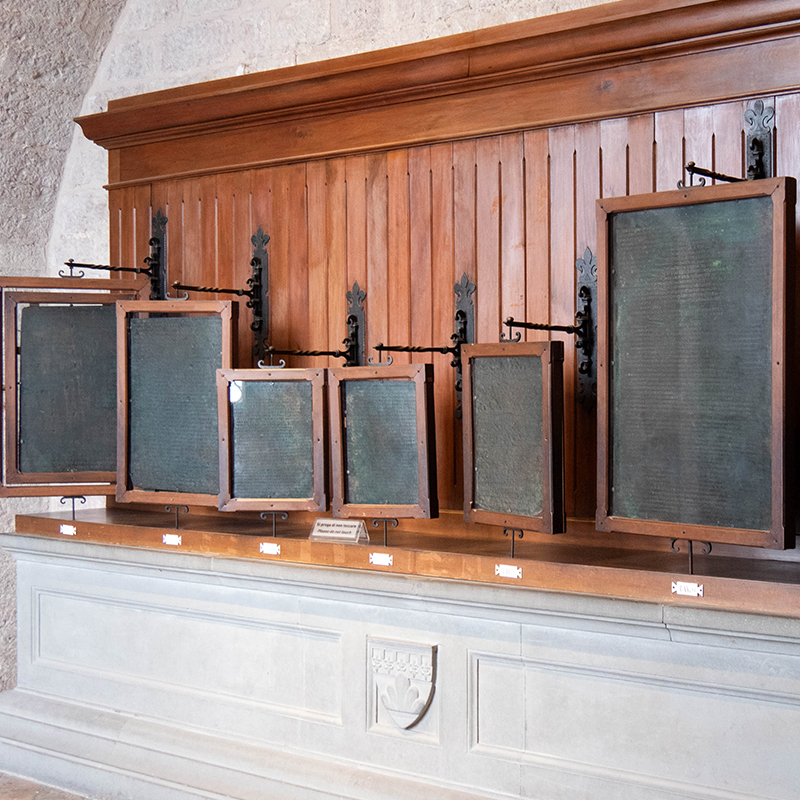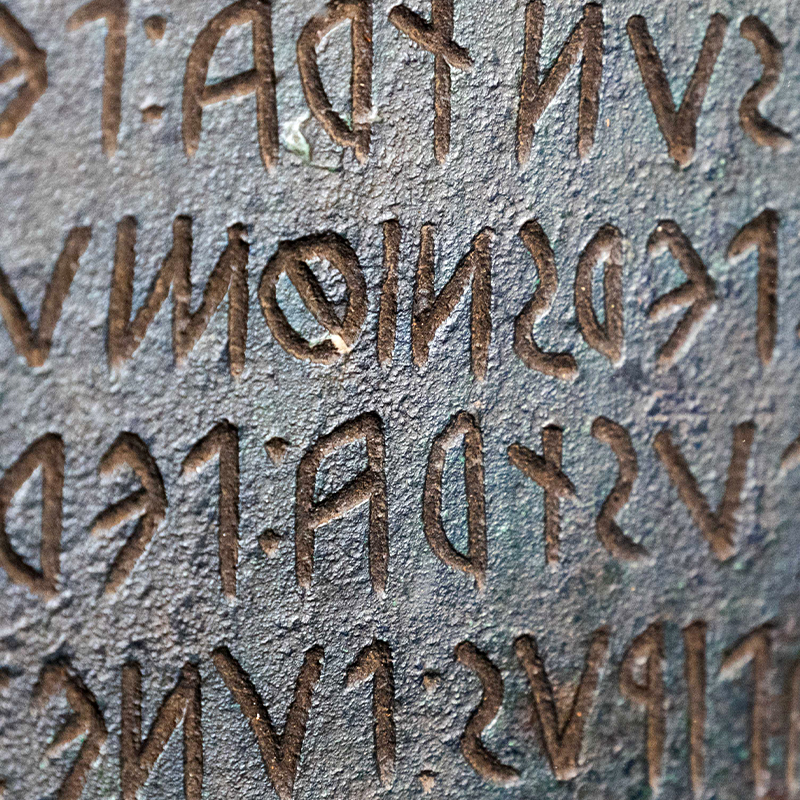Le Tavole
Eugubine

Tavole Eugubine represent the most important ritual text of the entire classical antiquity. They date back to the 3rd–1st century BCE and were engraved by different hands at different times. They consist of seven bronze tablets: the first five are written in an alphabet derived from Etruscan, while the last two use the Latin alphabet. In both cases, the language is Umbrian. The origins of the Umbrian people seem to trace back to the second Indo-European migration around 1000 BCE, when nomadic populations descended from Central Asia and merged with those already inhabiting the area, giving rise to the Italic peoples. The value of the Eugubine Tables lies precisely in their ability to offer a window into the customs and traditions of these people. The Tables describe religious rites and contain ritual prescriptions. These rites were performed for the benefit of the city of Gubbio. Through the analysis of these ceremonies, it is possible to gain insights not only into the religious life but also the political and economic organization of the Umbrians.
The ancient Eugubines had a Pantheon composed of divine triads, the most important of which was the Grabovian triad, formed by Jupiter, Mars, and Vofion. Between the lines, we can also understand how the city was organized: a sacred part (Okri) and a secular one (Tota). Gubbio was protected by a city wall equipped with three gates: Vehia, Trebulana, and Tessenaca. The territory was dotted with fortified settlements and sanctuaries, generally located on hilltops. The economy was based on agriculture and livestock farming. Given the scarcity of archaeological finds related to the Umbrian world, the culture of this people consists, for us, of everything narrated by the Eugubine Tables. (from “Gubbio città d’arte” by E. Sannipoli and F. Mariucci).
The Eugubine Tables are preserved in the Civic Museum of the Palazzo dei Consoli.




